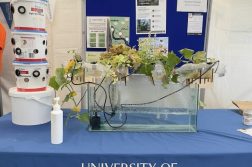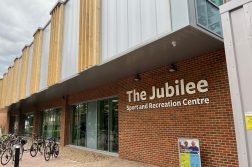The Peregrine Falcon, the fastest bird in the world, has returned to the roof of Winchester Cathedral.
In 2017, the Hampshire Police Headquarters on Romsey Road was knocked down, leading to fears for the future of the Peregrine Falcons living on its roof. But in recent days, for the fourth consecutive year, the falcons have returned to nest on top of Winchester Cathedral.
The Falcons, which are found on every continent except Antarctica and can migrate up to 25,000km, have seen a population resurgence in Hampshire over the past few years, with 2018 seeing twenty-five recorded nesting pairs.
Observing the birds are Keith Betton and Richard Jacobs of the Hampshire Ornithological Society, who have set up a ‘Peregrine Webcam’ where members of the public can watch the bird of prey family nesting, found here.
Posting on their website, the men wrote:
Our first egg in the Peregrine nest. This is a day later than last year. The female […] should lay eggs every 2 days now until she has a clutch of 4, but will not cover them regularly until the third egg. She wants to have most of her chicks hatching on the same day and one a bit later. It can be used as food for the others if prey gets scarce. Mark your calendar on 26 April …. when that first egg should hatch.
According to the Cathedral website, most adult Peregrines remain in their nesting territories throughout the year, with ‘young birds remain[ing] with their parents into their first winter but are chased away at the beginning of the new year‘.
The Peregrine Falcon was virtually extinct from Southern England by the 1980s following an aggressive government programme during World War Two to cull the species due to their killing of homing pigeons. Following the banning of some dangerous pesticides in the 1980s, the birds were reintroduced to Sussex and Dorset with the first Hampshire sightings coming when a pair nested on the chimney of Fawley Power Station in 1993. Soon after a purpose-built nest was constructed in Southampton and by 2008 there were nine recorded pairs nesting in the county.



